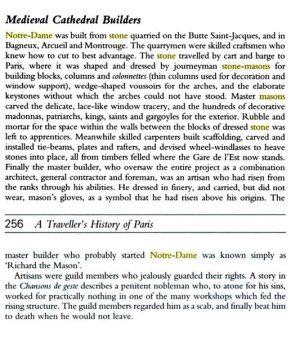Re: Europe / Eurozone
while not boozing it up, I hope you took the time from your socialist admiration of their politics and paid a visit and gave tribute they deserved, to YOUR FELLOW Americans buried there that gave their lives to keep France from speaking German, not mention the rest of Europe.
The
Oise-Aisne American Cemetery and Memorial is an
American military cemetery in northern
France. Plots
A through
D contains the graves of 6,012 American soldiers who died while fighting in this vicinity during
World War I, 597 of which were not identified, as well as a monument for 241 Americans who were
missing in action during battles in the same area and whose remains were never recovered. Included among the soldiers here who lost their lives is poet
Joyce Kilmer.
A graveyard for former soldiers that were dishonorably discharged and executed for crimes committed during
World War II, referred to as Plot
E, is nearby. Private
Eddie Slovik, the only American soldier executed for
desertion during World War II, was buried there until 1987.
[TABLE="class: toc"]
[TR]
[TD]
[/TD]
[/TR]
[/TABLE]
Site
The
Oise-Aisne American Cemetery and Memorial lies one and a half miles east of
Fère-en-Tardenois,
Aisne,
Picardy,
France and about 14 miles (23 km) northeast of
Château-Thierry. It is approximately 70 miles (110 km) northeast of
Paris.
The grounds extend to 36.5 acres (148,000 m[SUP]2[/SUP]) and this is the second of eight large permanent American World War I military cemeteries that are not in the United States. It was initially established on August 2, 1918 by the
42nd Division as a temporary cemetery, but was retained as a permanent cemetery by Congress in 1921. The French government provides the site at no cost for use as a military cemetery.[SUP]
[1][/SUP] The memorials were designed by
Cram and Ferguson and the landscape architect was George Gibbs, Jr.
The cemetery is generally rectangular in shape. The chapel, museum and grave plots are one side of the road and a parking area and the service facilities on the other side. The plots are divided by a walkway with a circular island of grass in the middle. The sides of the cemetery include paths, a privet hedge, and a low stone wall.
War dead buried at this site
Most of the 6,012 soldiers and support personnel honorably interred at this site died fighting during the
Second Battle of the Marne and the
Oise-Aisne campaign. The site also includes American servicemen who were buried in temporary cemeteries and were moved to this site when their families requested that they be buried overseas. All forty-eight of the
states that existed at the time, as well as the
District of Columbia, are represented.
Stars of David mark graves of
Jewish soldiers, all others have a
Latin Cross. The headstones are made from white
marble quarried in
Carrara, Italy.
597 graves at this site are for unknown soldiers. Like the
Tomb of the Unknowns in
Arlington, Virginia, the graves are marked:
HERE RESTS IN HONORED GLORY AN AMERICAN SOLDIER KNOWN BUT TO GOD[SUP]
[[/SUP]


